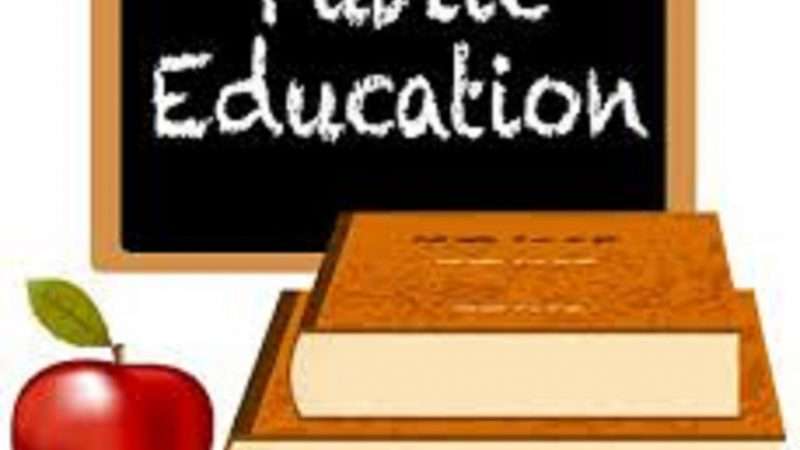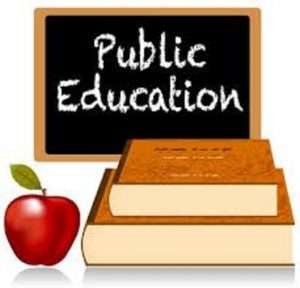

Over the last several years, much of the US has been beset by culture wars over education in which right and left try to skew public school curricula in their favor, while banning materials they find offensive or distasteful. On the right, the state of Utah recently passed a ban on “indecent” books that is so sweeping that some school districts have banned the use of the Bible in elementary schools because it contains “vulgarity and violence.” Florida recently enacted a sweeping ban on education about sexual identity, that goes far beyond it’s earlier “don’t say gay” law, and applies all the way through high school. It should be obvious that books describing sexuality and violence often have educational value, especially in higher grades. And there is nothing wrong with telling students about different types of sexual identity, even if it is also desirable that this be done with due sensitivity.
Left-wing jurisdictions have enacted dubious restrictions of their own. For example, some have banned the teaching of such literary classics as Huckleberry Finn and To Kill a Mockingbird, on the grounds that they contain racist language. The ridiculous rationale for such bans overlooks the obvious fact that the books in question do not defend racism, but condemn it.
These examples are just the tip of a much larger iceberg of dubious, ideologically driven curricular decisions in both red and blue jurisdictions. Some of these policies can be traced back to the flaws of particular politicians and activists, there is a more general structural problem underlying them. By its very nature, public education creates opportunities for the politically powerful to indoctrinate children in their preferred ideology, while locking out or severely restricting alternative viewpoints. Both red and blue states have a long history of doing exactly that. The problem dates back to the origins of modern public education in the 19th century, when in Europe it was often instituted for the purpose of indoctrinating students in nationalist ideology, and in the US often for the purpose of imposing Protestant views on new immigrants, many of whom were Catholics or Jews.
The danger of such indoctrination is the main reason why John Stuart Mill opposed state control of schools, even though he favored public subsidization of education for those unable to afford it. He warned that “[a] general State education is a mere contrivance for moulding people to be exactly like one another: and as the mould in which it casts them is that which pleases the predominant power in the government, whether this be a monarch, a priesthood, an aristocracy, or the majority of the existing generation.”
In US states, the “predominant power in the government” is usually some combination of majority public opinion and organized activists and interest groups. The intensifying right-left culture war of the last few years has heightened their eagerness to use the public education system to impose their will.
Some hope that the censorial tendencies of public school officials might be curbed by litigation. I’m not an expert on the relevant First Amendment doctrine, so may be missing something. But, at least for the most part, I think such hopes are largely baseless. In a public school system, the government inevitably has extensive power over the curriculum. It has to be able to dictate what is taught, select teachers, and discipline those unwilling to follow the rules. Even if courts might strike down some of the more egregious book bans, officials can get around that by dictating course content in other ways. By requiring the inclusion of X and Y, they necessarily leave less time for Z.
Courts or legislatures could potentially limit the power of higher-level school officials and instead leave more discretion in the hands of individual teachers. This is how things often work in state universities (including my own). But that nonetheless still empowers government officials (albeit lower-level ones) to impose value choices on dissenting students and parents. If you’re a conservative parent in an area where most of the relevant public school officials are liberal (or vice versa), those choices are likely to feel oppressive.
There is no perfect solution to this problem. But it can be mitigated by school choice policies under which parents are given vouchers or tax credits to choose from a wide range of schools. Many states have enacted new school choice laws over the last few years. While much of this is driven by conservatives and libertarians, parents and students with a wide range of views stand to benefit.
Liberal parents in conservative areas can choose schools that reflect their preferences, and the same goes for conservatives in liberal areas, and the many parents who would simply prefer to avoid culture war-oriented curricula of either side. To the extent that red states are more likely to enact school choice policies than blue ones, liberal parents and students in red jurisdictions are actually among the biggest beneficiaries of school choice. Otherwise, they might be forced to accept curricula dictated by the likes of Florida Gov. Ron DiSantis and his socially conservative allies.
To be sure, parents exercising choice may select schools with dubious curricular policies, whether of the right or the left. But that danger is less severe when parents can “vote with their feet” through school choice than when they make decisions about education (and other issues) in elections. Because of the very low odds that any one vote will make a difference, ballot box voters have little incentive to seek out information about policy issues, or to evaluate what they learn in a unbiased way. They are instead rationally ignorant, and often act as biased “political fans.” That dynamic helps explain the incredible idiocy of many culture-war driven education policies. They aren’t adopted through careful reasoning, but for the purpose of appealing to the raw emotions of political fans.
Foot voters, by contrast, have much better incentives to both seek out relevant information, and evaluate it objectively. That includes parents making choices about their children’s education in a situation where their decisions will make a decisive difference about which schools their kids will actually attend, and with what kind of curriculum. Foot-voting parents are less likely to be seduced by stupid culture-war policies than ballot-box voters. They are more likely to try hard to seek out schools that maximize educational quality. Indeed, school choice often disproportionately benefits poor and minority students who are mostly likely to be shortchanged by conventional public schools, who are least able to effectively make use of political leverage.
Empowering parents to choose can also help mitigate the education culture war. If parents with different views can have their needs met by different schools, they are likely to feel less need to impose their preferences on the unwilling. By contrast, such imposition is hard to avoid in the zero-sum game of public education, where there usually must be a single curriculum imposed on an entire region or state.
Choice can also reduce the danger that a single form of harmful indoctrination will be imposed across the board, on all the students in a given state or—even worse—throughout the country (should the federal government gain more control over education). Even if some parents opt for ideologically dubious curricula for their children, that is less dangerous than having the same set of bad ideas imposed on everyone.
To be sure, there is a danger that state or local governments might use voucher systems to impose ideologically driven curricula. Some minimal standards for voucher eligibility are unavoidable, and the state can potentially abuse that authority. For example, it can try to ensure that only schools with right-wing curricula (or only left-wing ones) are eligible for vouchers.
This problem is a genuine danger that school-choice proponents should take seriously. But it is mitigated by the fact that it’s much harder for state authorities to impose tight curriculum controls on private schools where they do not control the hiring and firing of personnel and cannot easily supervise on a regular basis. Significantly, states that have adopted broad-ranging school choice programs have generally not attached tight curricular restrictions to them. That’s even true of red states that have simultaneously imposed very dubious rules on public-school curricula. For example, Florida’s recent major expansion of school choice does not impose on participating private schools any of the controversial “don’t say gay” restrictions new state laws have forced on public ones. Those who (rightly, in my view) decry the latter laws, should welcome the former! They will enable more parents and students to escape dubious right-wing public school curricula.
Perhaps even more tellingly, the long history of federal subsidization of higher education has resulted in little in the way of federal control over the curricula of private and state universities (though such subsidies and their attached conditions have caused various other problems). In a long career of teaching politically controversial subjects at such schools (both private and state), I don’t think I’ve ever heard of a curricular decision being influenced by ideological pressure from the federal Department of Education. I don’t claim such things never happen. But they are rare—especially compared to the power state and local governments exert over the curricula of public schools.
There is, perhaps, something of a contradiction between may red states’ eagerness to impose right-wing orthodoxy in public schools and their simultaneous willingness to give vouchers to students attending private schools, with few or no ideological constraints. But inconsistency is often preferable to being consistently wrong. At the very least, liberals who dislike these states’ public-school curricular policies should be more open to school choice.
Choice is not a panacea for the all the ills of our education system. Nor will it make the culture wars go away entirely. But it can help mitigate some of the worst aspects of both.
The post How School Choice Can Mitigate Harmful Culture War Policies in Public Education appeared first on Reason.com.
from Latest https://ift.tt/VubEP3M
via IFTTT